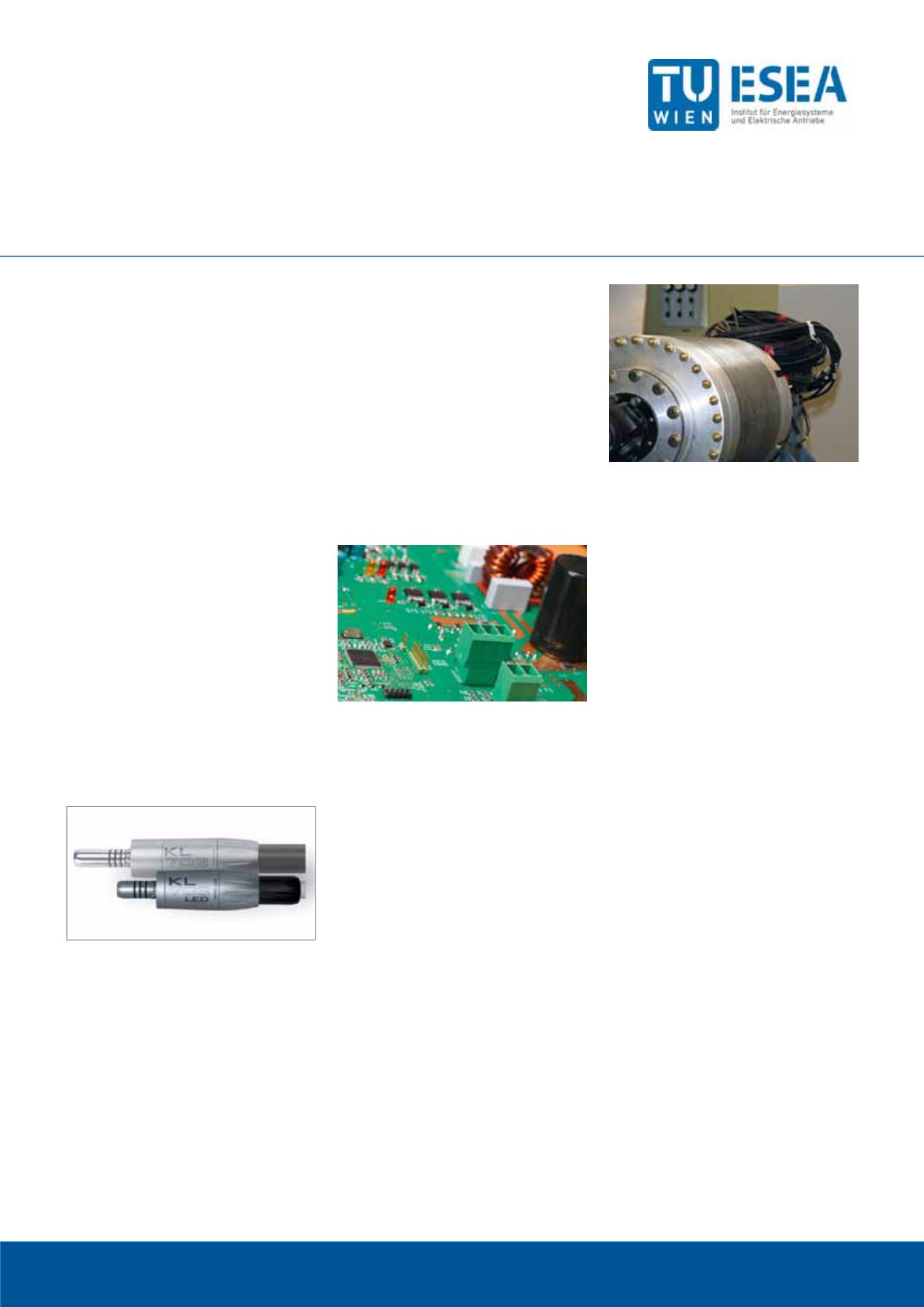
171
position sensor. At high speed we use the
well known back EMF method. At low
speed and at standstill this model will not
work due to the lack of the stator volt-
age. So we developed the so called
INFORM method which uses the machine
itself as a sensor. Therefore some test
pulses are applied to the machine and
the response can be used to calculate
the actual angular speed of the motor
shaft which is needed for a field orien-
tated control of the PMSM. Latest devel-
opments are aimed to include these test
pules into the normal operating mode.
So the noise of the INFORM test pulses
will be negligible.
The INFORM method is independent of
the size of the motor. As an example for
small drive applications, we implement-
ed the INFORM method together with
a dental company in their products. So
we solved their former problem of dam-
aged Hall sensors during high temper-
ature sterilization (Hall sensors can be
used for the field orientated control of
the PMSM). Now they are able to cover
The Institute of Energy Systems and Elec-
trical Drives was merged in 2011 from
the institute of “Electrical power sys-
tems”, “Electrical drives and machines”
and the “Energy economics group”.
Our department is active in the area of
the design of electric machines, as well
as their regulation. Of course the power
electronics may not be disregarded in
the drive technology.
Due to the trend of repairing compo-
nents just before a problem arises, moni-
toring is also a topic in our field of re-
search. One domain is the monitoring of
induction machines where the squirrel
cage is examined for a breaking bar. In
the view of life time, the inverter’s weak-
est component is the DC link capacitor.
So another domain is the monitoring of
these capacitors of an inverter without
additional components in the power path
of the inverter.
The main focus of our research is the
highly dynamically sensorless control of
permanent magnet synchronous ma-
chines (PMSM). Sensorless means you
do not need any mechanical speed or
the whole range of speed with one drive
and can serve additional applications
where full control of speed and torque is
needed. As a high torque application ex-
ample, we designed a traction machine
for propulsion with the scope of good
sensorless properties. So the drive is able
to be highly overloaded and even be con-
trolled without sensor. In the figure the
4kNm prototype is shown.
As mentioned, the INFORM method is
independent of the size of the machine.
We are able to control small machines
with a few mNm at very wide speed
range up to torque motors in the range
of several kNm at low speed. Therefore
no speed or position sensor is needed
even at low speed and standstill.
Vienna University of Technology
Fig.: 4000 Nm traction drive
Fig.: Prototype inverter design
Fig.: Dental drive with INFORM


